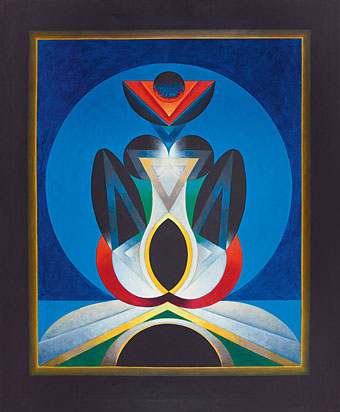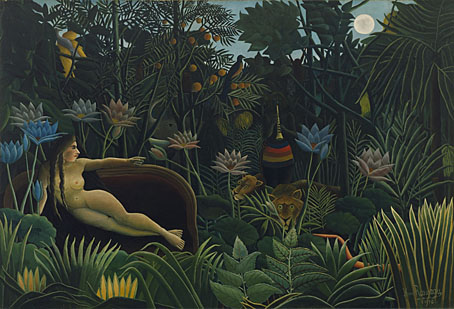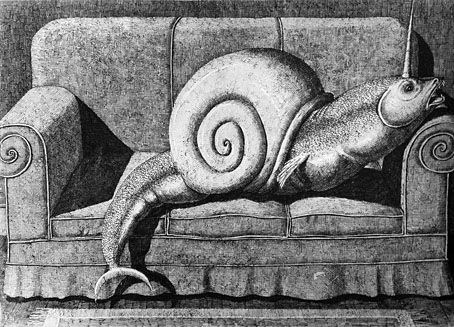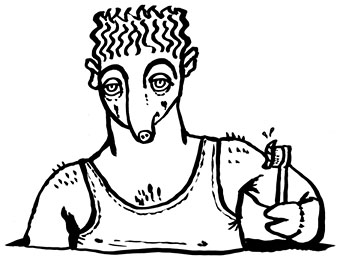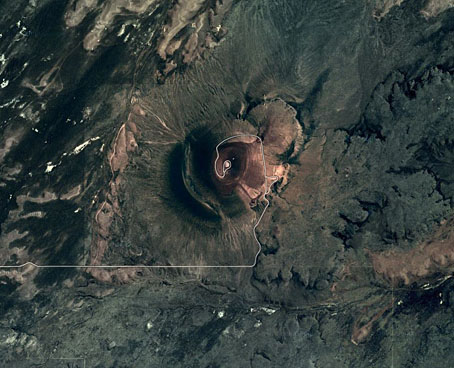Untitled (1978) by GR Santosh at 50 Watts.
• Evertype Publishing produces a range of Lewis Carroll special editions including Ailice’s Àventurs in Wunnerland (a translation in Scots), Alicia in Terra Mirabili (a Latin version), and an edition printed in the Nyctographic Square Alphabet devised by Carroll.
• This week’s bookshop animations: Type Books, Toronto presents The Joy of Books while at Shakespeare and Company, Paris, Spike Jonze and Simon Cahn explore the erotic life of book covers in Mourir Auprès de Toi.
• Invisible Girls and Phantom Ladies, a 1982 article on sexism in (US superhero) comics by Alan Moore. Thirty years on, things haven’t improved much at all.
I reread it now, 35 years later, and I am struck by its capacity to change like a magic mirror. Where I had originally seen it as a book about writing, about becoming a writer, I now see it as a book about reading, about taking one’s place in the chain. Where I once assumed it was a book about eternal youth, I now see it as a book about growing up, about learning to live.
• Dark Water, Lovecraftian carpet designs (yes, carpets) by Kirill Rozhkov. Danish carpet manufacturer Ege has a catalogue showing the finished products.
• Neil Gaiman ventures into the treacherous labyrinth of M. John Harrison’s Viriconium.
• Nicholas Lezard reviews The White People and Other Weird Stories by Arthur Machen.
The Dream (1910) by Henri Rousseau at the Google Art Project.
• Reassessing the Saul Bass and Alfred Hitchcock Collaboration by Pat Kirkham.
• Getting There Too Quickly: Peter Bebergal on Aldous Huxley and Mescaline.
• Hidden in the Open: A Photographic Essay of Afro-American Male Couples.
• Filles En Aiguilles, a new musical work by Schütze+Hopkins.
• RubiCANE’s Erotic Illustrations.
• Laurie Anderson has a Godplex.
• Alan Bennett on Smut.
• The Jungle Line (1975) by Joni Mitchell | The Jungle Line (1981) by Low Noise (Kevin Armstrong, Thomas Dolby, JJ Johnson & Matthew Seligman) | The Jungle Line (2007) by Herbie Hancock with Leonard Cohen.

